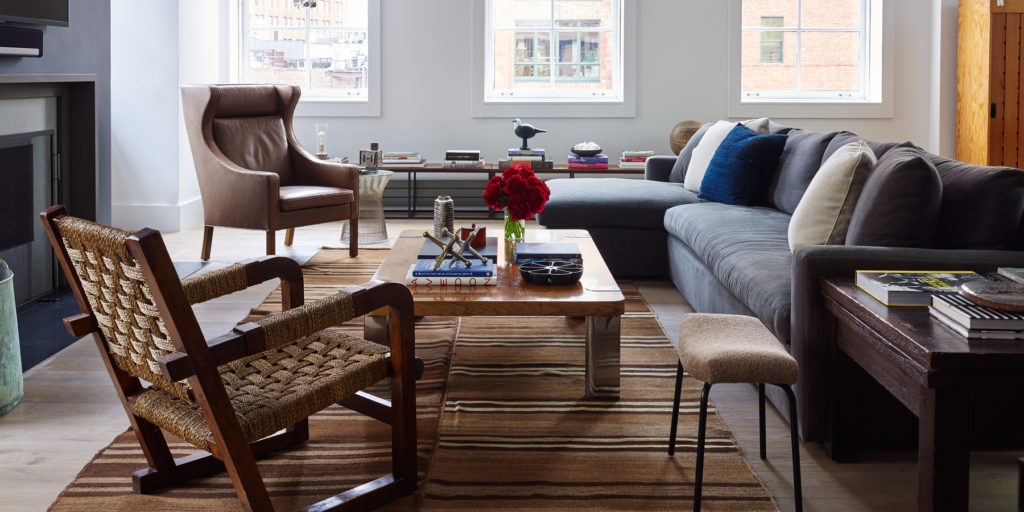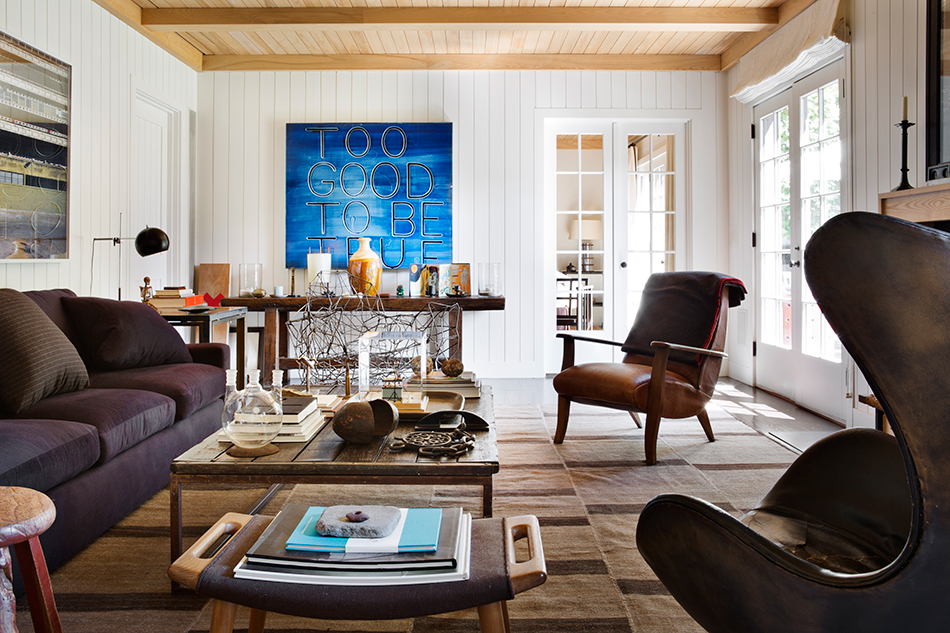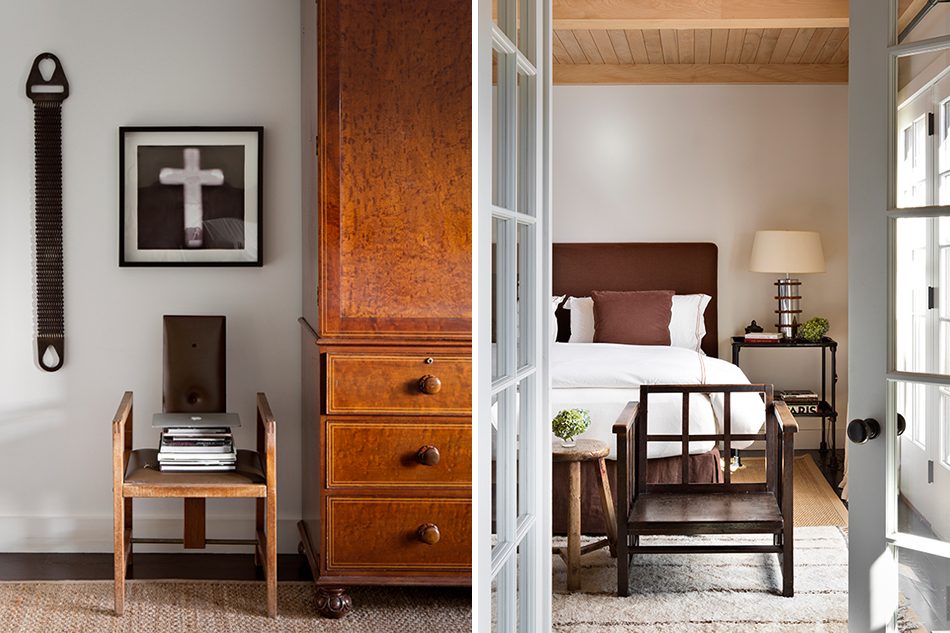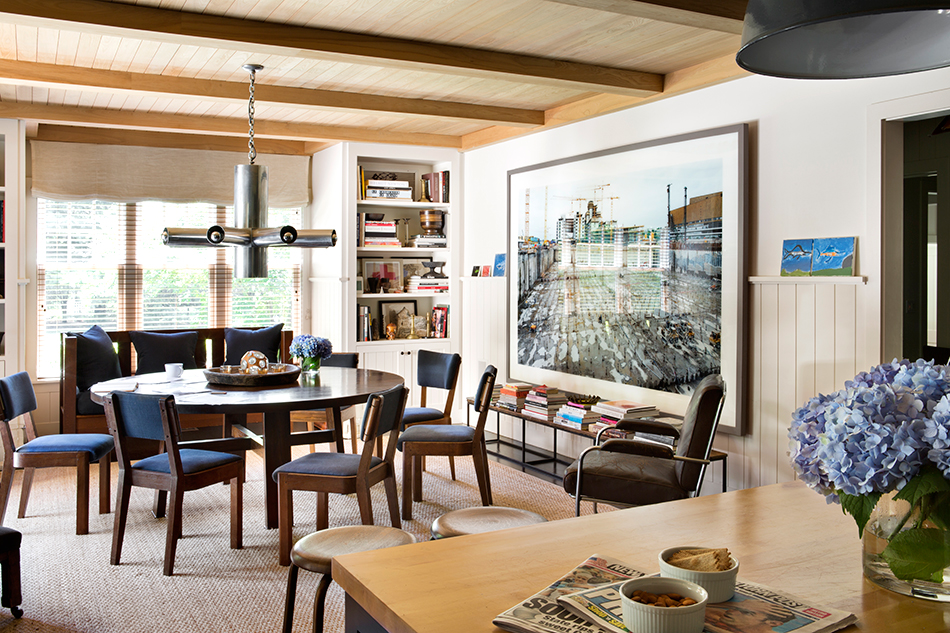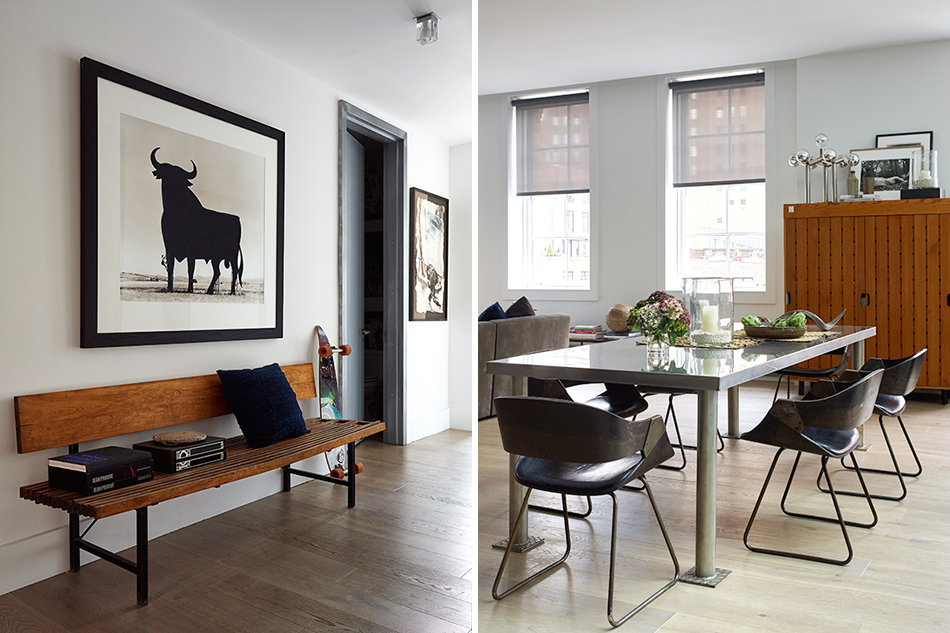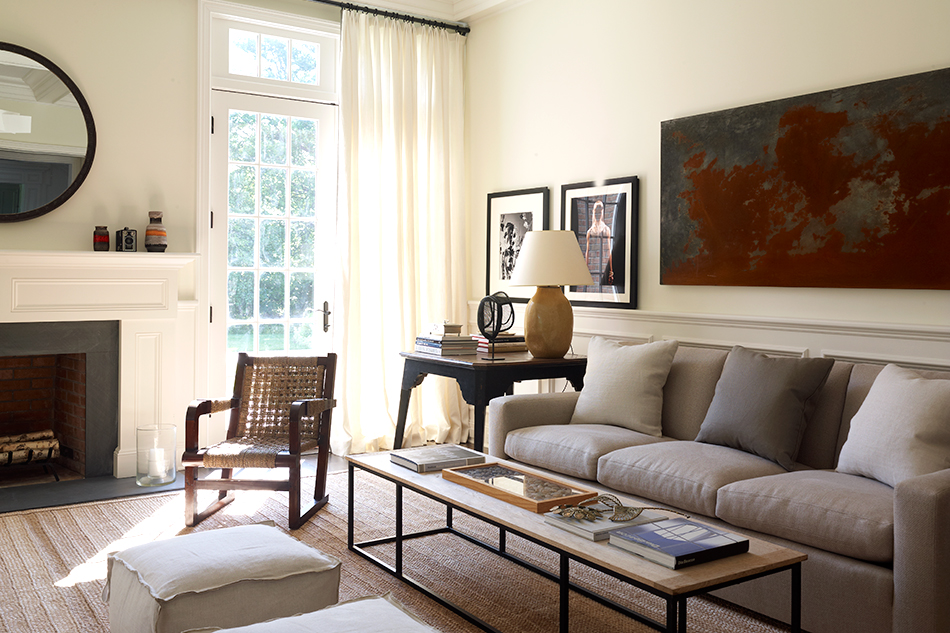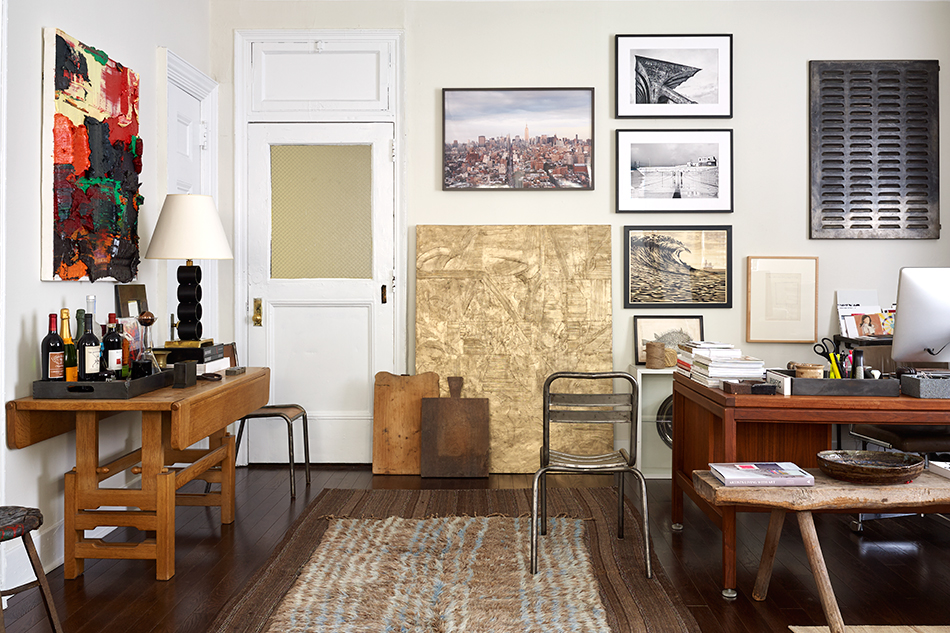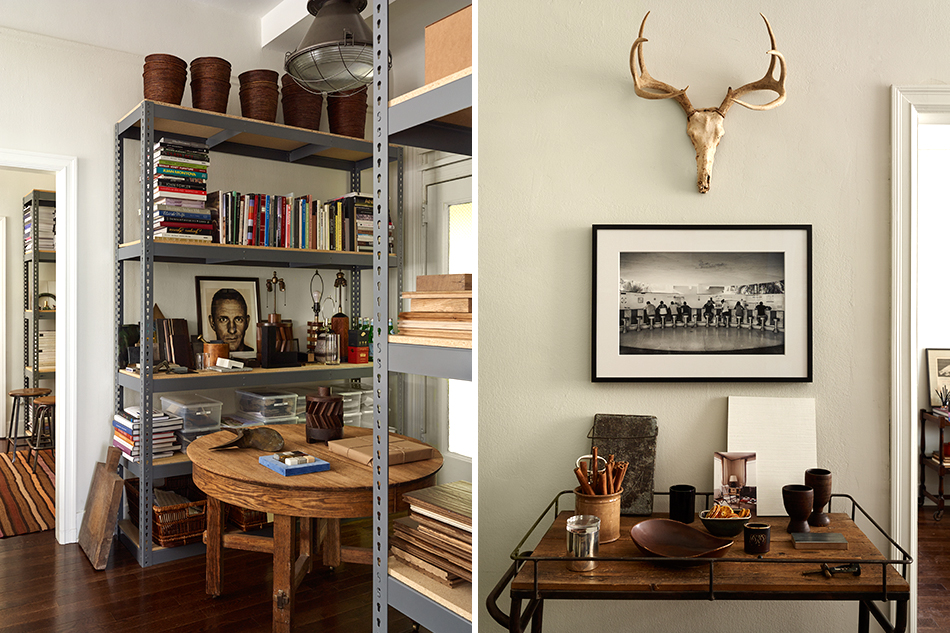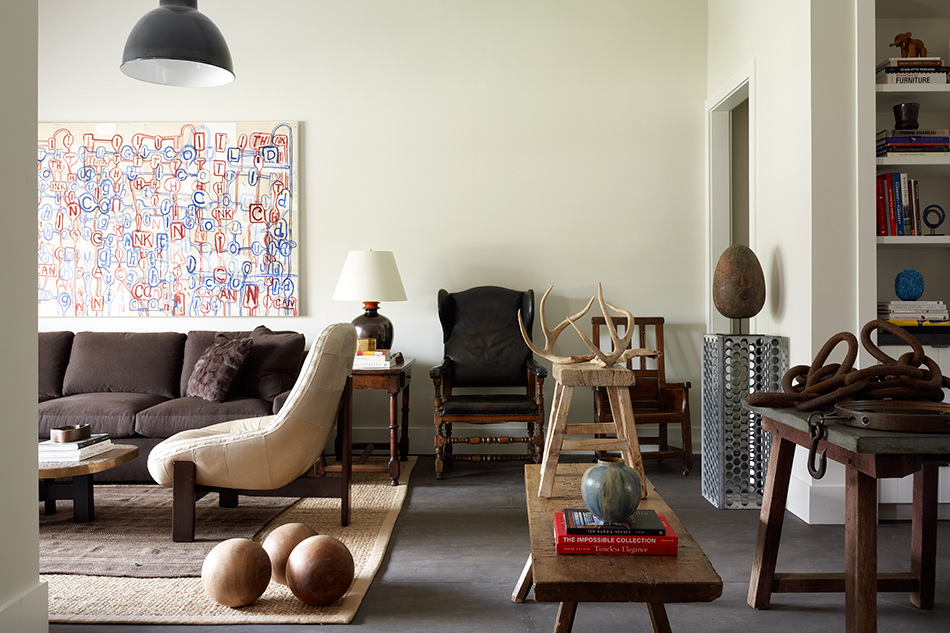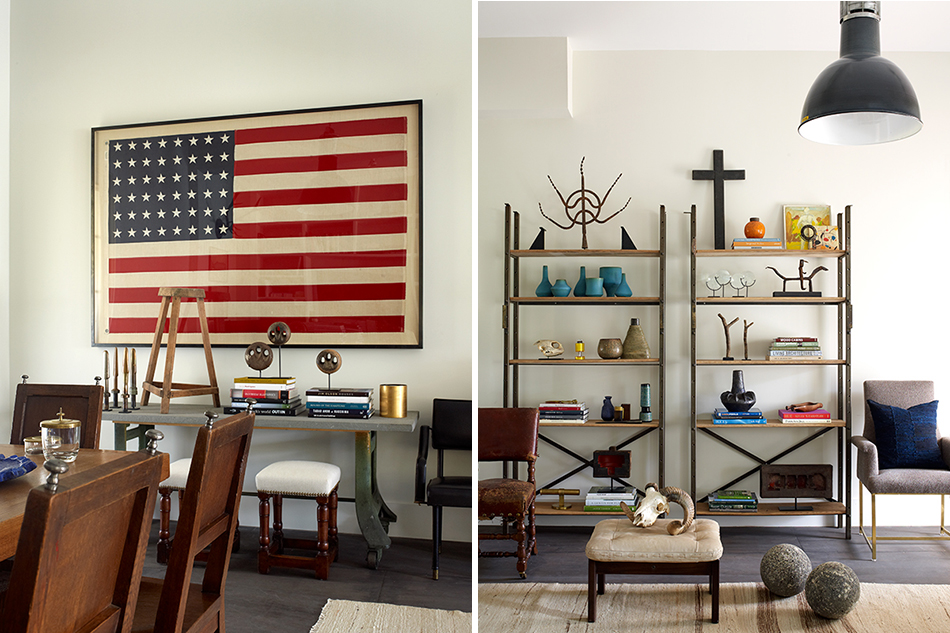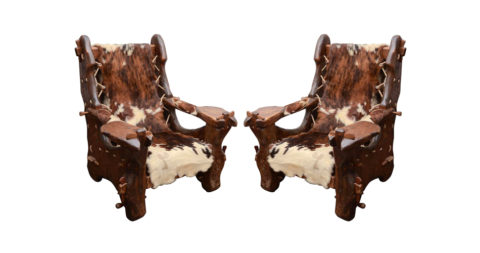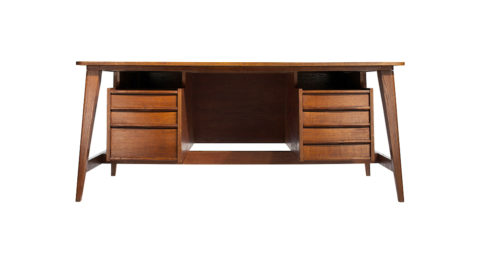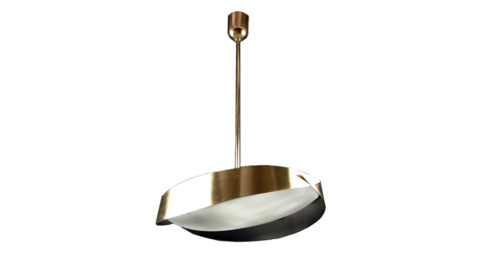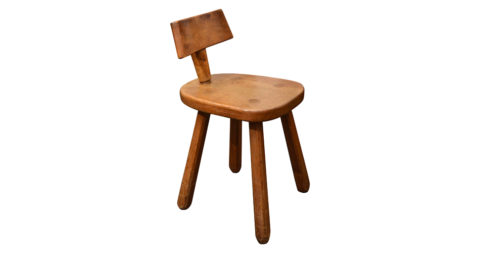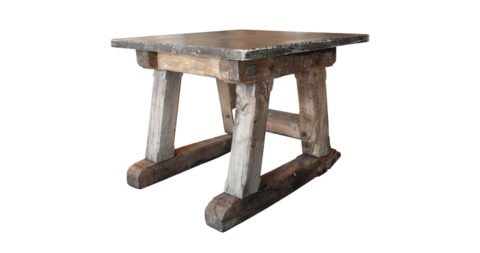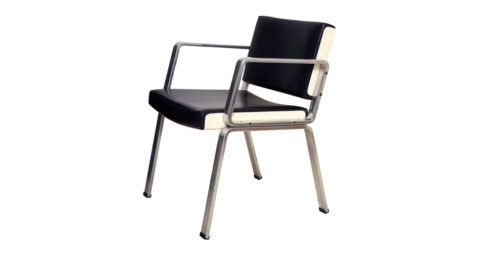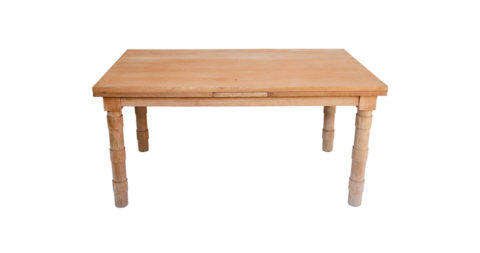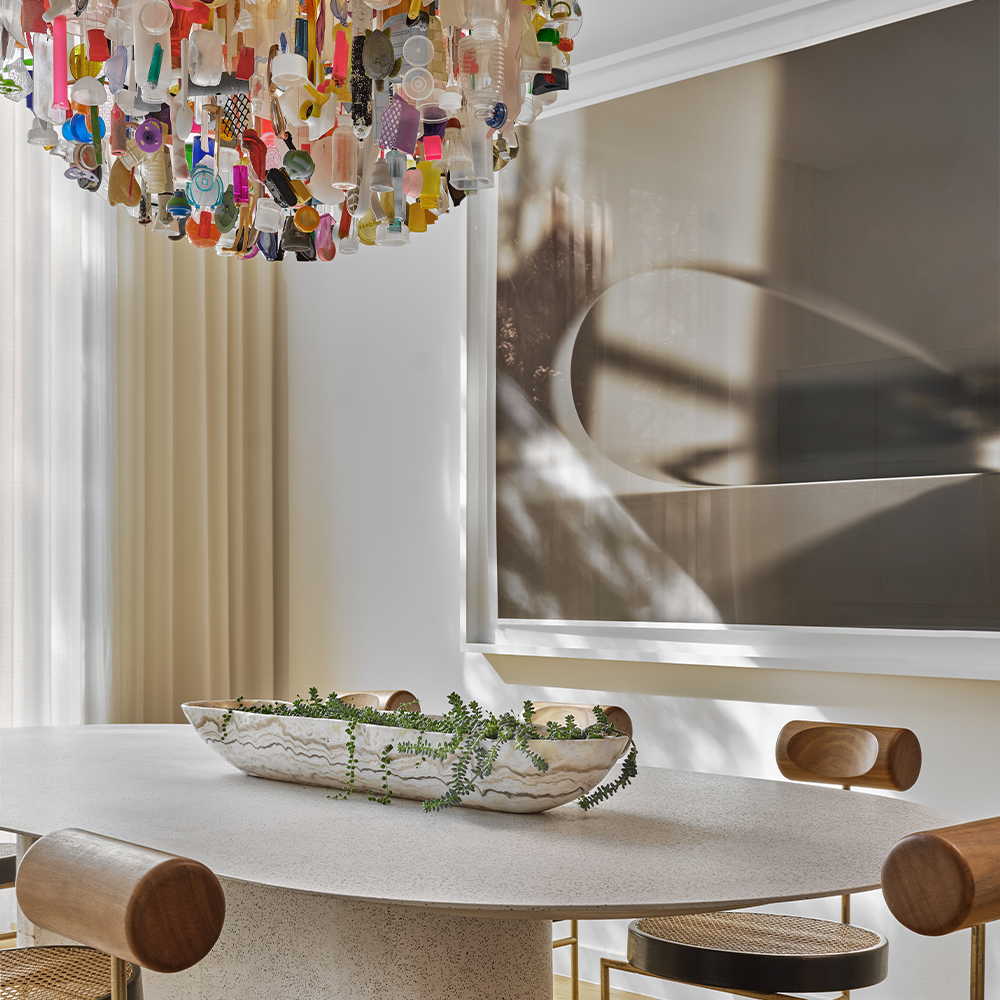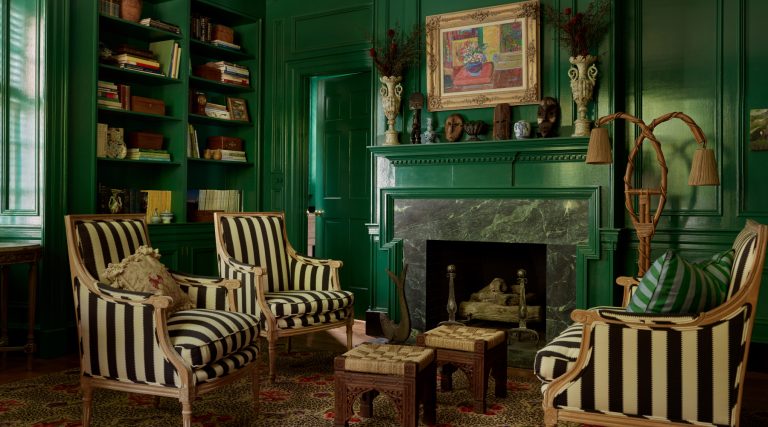
May 9, 2016Robert Stilin’s signature laid-back interiors are New York’s answer to unstudied California cool (portrait by Richard Phibbs). Top: In a Tribeca loft, the designer combines a 1960s Børge Mogensen leather wingback chair with a streamlined custom sofa, vintage kilim and a chrome and wood coffee table from his eponymous shop. All photos by Joshua McHugh, unless otherwise noted
Last year, Robert Stilin had trouble getting guests to leave his company Christmas party. Like so many of the spaces he’s designed, his sprawling NoMad-district Manhattan office, with its worn leather chairs, Guillerme et Chambron dining table and jaw-dropping collection of 20th- and 21st-century photography, is beautiful to behold but even better to lounge in.
“Livability is really important,” says Stilin, pulling up a handcrafted oak and steel Buell stool, which he designed and is as likely to place in a sophisticated Fifth Avenue duplex as in a Hamptons beach house. “I really like quality, comfort, shape and form, and just being practical.”
His low-key yet luxurious touch has landed him on Architectural Digest’s 2016 AD100 list and made him sought after by captains of industry, financiers and art collectors looking for the interiors version of a sweater in perfectly broken-in five-ply cashmere — a fabric, by the way, Stilin is not afraid to use for upholstering a sofa.
Stilin’s rule-
“I’ve always been a visual person,” Stilin says. As a child in Mellen, Wisconsin (population 1,000), he spent hours sketching youthful fascinations like cars and airplanes, but also drafted plans for houses. “When you grow up in a very small town and you know at a young age that you’re not going to stay there, you end up developing a really strong imagination,” he adds.

In Stilin’s house in East Hampton, New York, a vintage Arne Jacobsen Egg chair and a rush armchair in the style of Jacques Adnet stand before a minimalist oak mantel. The black-and-white photograph is by Justine Kurland.
Stilin studied business at Skidmore College, in Upstate New York, intending to hit Wall Street, but after graduating he settled in the warmer climes of Palm Beach, Florida. While furnishing his first home, in 1989, he decided to open a retail shop, Robert Scott Stilin, on Worth Avenue. “It was an early-nineties version of what I do today,” he explains. “Custom-upholstered furniture from Jonas, antique and decorative furnishings and objects from the U.S., France and Italy.”
Almost immediately, one of his customers asked for help with decorating her Spanish-style lakefront home. “I said, ‘Okay, I can do this. It’s a different way for me to sell stuff out of my store.’ So I started researching and figuring it out,” he recalls. “From the very beginning, I had my sights set very high. I always went after quality — the best vendors, the best contractors, the best upholsterers.” More projects followed, and he eventually packed his bags for New York and East Hampton, where he unveiled his current storefront, Robert Stilin, in 2003.
Like master retailer Ralph Lauren, Stilin draws inspiration from the way his well-heeled clients already live and then aims to improve upon it. When describing the Manhattan duplex of a family of serious art collectors (the type who casually display both a Robert Mapplethorpe and a Malcolm Morley in a child’s bedroom), he says, “One of the first things that people say is, ‘Wow, this is so comfortable. There’s Mark Rothko and Joan Mitchell and Richard Prince and Giò Ponti, but it’s not stuffy.’ I don’t believe in designing spaces for art. I also don’t believe in living in museums.”
Stilin is often asked to incorporate art in this relaxed yet mindful manner. For a Tribeca loft, stunning black-and-white photographs are nonchalantly propped atop a pine and metal cabinet by Charlotte Perriand surrounded by a vintage Industrial dining table, a J.T. Kalmar brass table lamp and — checking the “livability” box — a flat-screen television.
Layering warm, weathered and tactile materials in monochromatic tones is another one of his techniques for achieving his signature sense of laid-back comfort. His projects feature a mix of wood, metal and glass, often complemented by cashmere, alpaca and fur. “I like things that are as soft and as natural as possible,” he says, revealing that he often rubs fabrics on his arm or face before selecting them. “I really think that home should be a sanctuary. It should make you feel good.”

To lend a sense of layered history to a too-new Sagaponack, New York, home, Stilin added an oxidized contemporary mirror, a 1940s French console and a lamp made from an antique bottle from Laurin Copen Antiques.
To warm up a newly built shingle-style house in the Hamptons, he used his typical blend of antique and vintage furniture. In the main room, he paired an almost-rustic René Gabriel wood and rope chair with an Arts and Crafts games table, further accessorizing with German ceramics and black-and-white photography. The double-height foyer features a new mirror, oxidized to appear older, hung above a table holding an array of vintage African currency displayed on stands like sculptures. The overall effect is to make the large-scale house welcoming and relaxed, as if it had been residing on a Sagaponack country road for the past century.
“The way you create comfort is by adding some age, some history. If you have a leather chair that somebody sat in for eighty years, it has the history of their life, and it takes the edge off all the newness,” Stilin says. “That’s a big part of my work — adding different layers of texture and age.”
Indeed, his East Hampton emporium — like his office — could easily be mistaken for a well-loved home. For Stilin, the store acts as both a showcase and a laboratory, where he cleverly places antique American flags in tarnished bronze frames to look like paintings and re-covers Danish wingback chairs in linen or leather. A self-described “shopper,” Stilin seeks out finds everywhere from West Palm Beach’s South Dixie Highway to Austin to Seattle, making quarterly trips to the Paris flea market and favorite London dealers in between. He’s forever in search of French 1940s and ’50s furniture, English leather chairs and “anything by Børge Mogensen,” as well as vintage ceramics, lamps and rugs, all ripe for reinvention. “The roots of my business are in retail and being a shopkeeper,” Stilin says. “If you see something you really like and it’s special and unusual, you better grab it because you are not going to get it again.”
